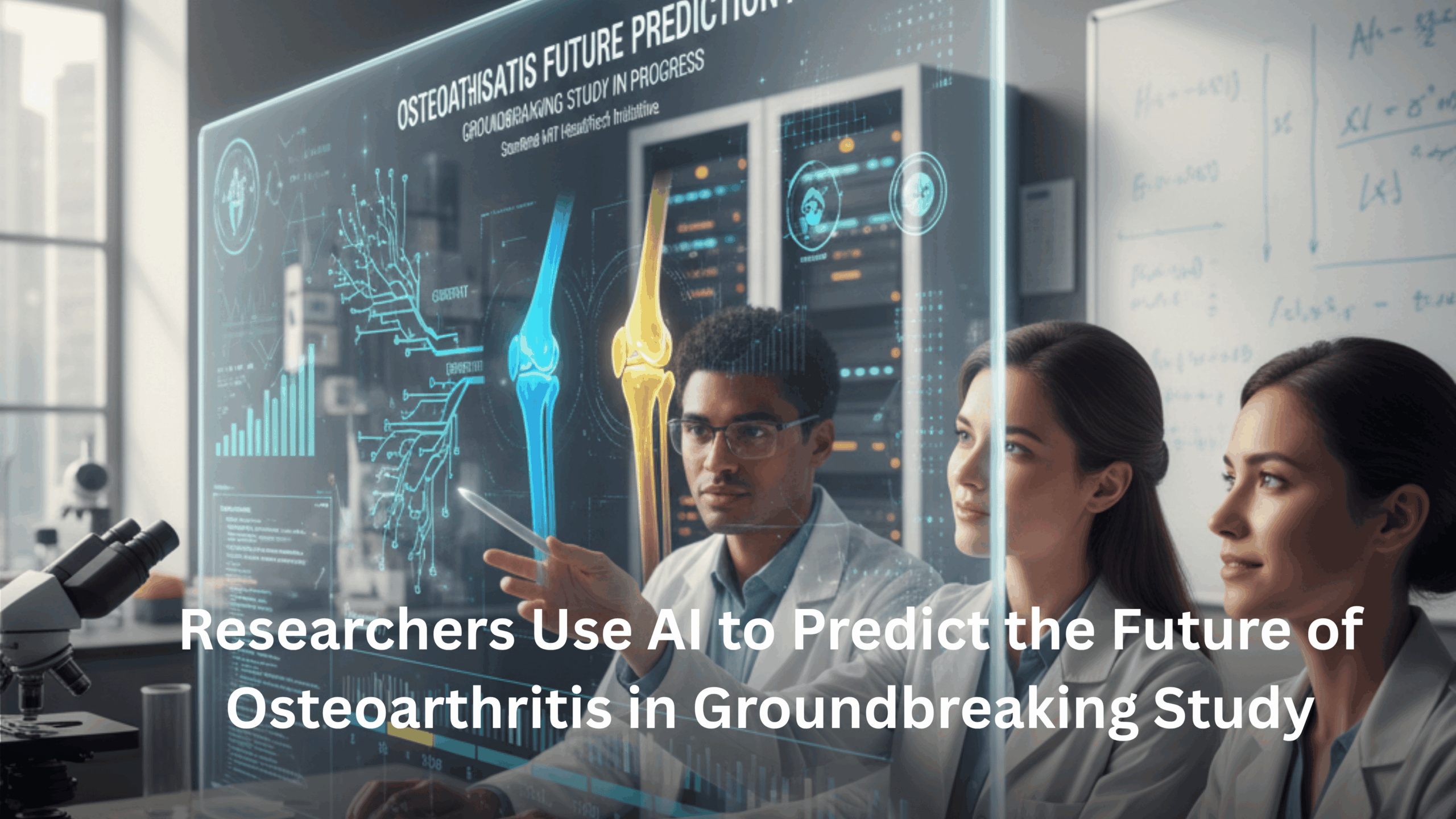Preparing for government exams requires dedication, discipline, and the right resources. Thanks to technology, Government Exams Online Notes have revolutionised […]
Researchers Use AI to Predict the Future of Osteoarthritis in Groundbreaking Study

Artificial Intelligence is now being increasingly used in medicine and is even being trained to predict how diseases might progress over time. It is no longer limited to helping with diagnosis but is beginning to look into the future of our health. Just imagine how beneficial it would be if you could know how your organs and tissues might appear after one year, five years, or even ten years. Such insight could help both doctors and patients take the right steps at the right time, preventing complications long before they arise.
In one of the most recent developments in medical research with fusion of Artificial Intelligence, scientists at the University of Surrey have developed an AI system that can forecast how a person’s knee joint will change over time due to osteoarthritis. This breakthrough study combines medical imaging and advanced machine learning to give a glimpse into the future of joint health. Imagine looking at an X-ray today and seeing what your knee will look like a year from now.
Osteoarthritis: Current and future scenario
Osteoarthritis is a long-term joint disease that occurs when the cartilage protecting bones wears away, causing pain, stiffness, and limited movement. It is often called a wear and tear condition because it develops slowly and most commonly affects the knees, hips, spine, and hands.
Worldwide, about 528 million people had osteoarthritis in 2019, rising to over 600 million by 2021. The World Health Organisation warns that this number could reach up to 840 million by 2035, largely due to aging populations, obesity, and sedentary lifestyles.
In India, the situation is equally serious. Cases have risen from 23 million in 1990 to more than 62 million in 2019, and experts predict they may exceed 80 million by the early 2030s. Nearly half of India’s elderly population suffers from symptoms of knee osteoarthritis, making it a major cause of pain and disability.
Inside the breakthrough study:
The new research, led by David Butler and Professor Gustavo Carneiro from the University of Surrey’s Centre for Vision, Speech and Signal Processing, was presented at the 28th International Conference on Medical Image Computing and Computer Assisted Intervention (MICCAI 2025) in Daejeon, Republic of Korea.
Their AI system was trained on nearly 50,000 knee X-rays from about 5,000 patients, one of the largest osteoarthritis datasets in the world. It uses advanced algorithms to analyse a patient’s current X-ray and predict what the same knee will look like one year later. This model not only estimates the level of deterioration but also highlights 16 important points in the joint. These landmarks help doctors understand exactly which parts of the knee are likely to change.
Professor Gustavo Carneiro explained:
“Earlier AI systems could estimate the risk of osteoarthritis progression, but they were often slow, opaque and limited to numbers rather than clear images. Our approach takes a big step forward by generating realistic future X-rays quickly and by pinpointing the areas of the joint most likely to change. That extra visibility helps clinicians identify high-risk patients sooner and personalise their care in ways that were not previously practical.”
The system achieved a higher accuracy rate than previous technologies (AUC 0.71) and was nine times faster, proving that predictive AI can be both efficient and reliable in clinical use.
How the AI works?
The technology uses a generative diffusion model. It is the same class of AI used in image creation software. By analyzing the current knee X-ray, the system generates a realistic future image that reflects potential cartilage loss, bone changes, and narrowing of the joint space.
It then compares the predicted image with the present one to assess the likelihood of osteoarthritis progression. Orthopaedic surgeons can interpret these results using the Kellgren Lawrence (KL) scale, which grades osteoarthritis from 0 (normal) to 4 (severe). It also identifies 16 key anatomical landmarks on the joint, adding transparency and interpretability for doctors.
What makes this AI particularly useful is that it not only predicts the change but shows it visually, helping both clinicians and patients see what might happen next. This approach not only achieved higher accuracy (AUC 0.71) than previous state of the art models but also worked nine times faster, using far fewer computing resources.

osteophytes (red), sclerosis (blue), and bone remodelling (green).
Why this Research matters ?
Seeing how a joint might look a year from now can change the way patients and doctors approach treatment. It gives both sides a clear picture of what could happen if nothing is done and what improvements can be made with the right care.
David Butler, the lead researcher, explained it this way:
“We are used to medical AI tools that give a number or a prediction but not much explanation. Our system not only predicts the likelihood of your knee getting worse but also it actually shows you a realistic image of what that future knee could look like. Seeing the two X-rays side by side, one from today and one for next year, is a powerful motivator. It helps doctors act sooner and gives patients a clearer picture of why sticking to their treatment plan or making lifestyle changes really matters. We think this can be a turning point in how we communicate risk and improve osteoarthritic knee care and other related conditions.”
Such visual feedback can help patients take preventive action early through exercise, weight management, physiotherapy and medication. It also allows doctors to tailor treatment plans and track improvement more effectively.

The Future of Predictive Medicine
This kind of technology could go far beyond osteoarthritis. It might one day help predict how other chronic diseases progress, such as monitoring lung damage in long term smokers, tracking the development of heart disease, or observing changes in brain conditions like Alzheimer’s or Parkinson’s disease. By showing what the future could look like, this AI system gives doctors and patients valuable time to make informed decisions, adjust treatments, and prevent further damage before it becomes irreversible.
This approach is part of what is known as predictive medicine, a growing field that uses data, imaging and artificial intelligence to forecast the future course of diseases. Instead of only diagnosing or treating a condition after it develops, predictive medicine aims to anticipate changes in the body and intervene early. It allows healthcare to move from a reactive model to a proactive one, giving people the opportunity to protect their health long before symptoms appear. By showing what may happen in the future, doctors and patients gain valuable time to intervene and prevent severe outcomes. Predictive Medicine could soon become a vital part of regular health checkups, transforming prevention into a precise science.


